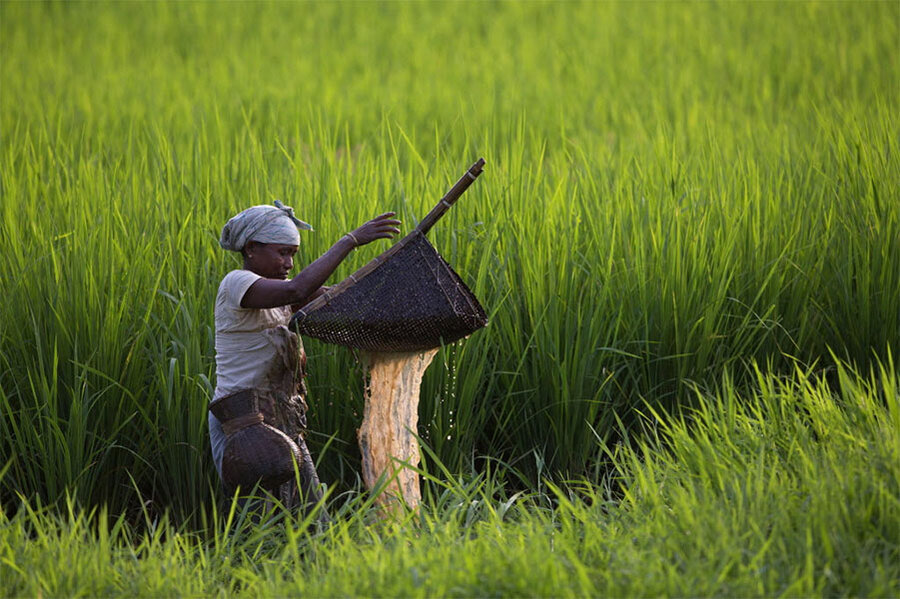Extreme poverty could cease to exist in 15 years
Loading...
The number of people living in extreme poverty will dip below 10 percent of the global population before the year is over, according to the World Bank, marking one step closer to the goal of ending poverty by 2030 – an objective adopted among 193 countries at the United Nations last month.
And if the world continues on its fast track of economic progress, extreme poverty will cease to exist in 15 years.
“This is the best story in the world today,” said Jim Yong Kim, World Bank Group president, in a statement. “This new forecast ... should give us new momentum and help us focus even more clearly on the most effective strategies to end extreme poverty.”
An updated definition of poverty is those living on $1.90 or less per day (up 65 cents from the 2005 standard). The World Bank projects that 702 million people will be living in extreme poverty in 2015 – that’s 9.6 percent of the worldwide population. In 2012, the number was 908 million people, or 12.8 percent of the population. The findings indicate two different milestones, says Homi Kharas, a senior fellow at the Brookings Institution in Washington.
“First, it conveys the progress that has been made in the last 15 years since the Millennium Development Goals were set,” Mr. Kharas says, referring to the UN program. “And second, it says that we’re now at a level ... that’s low enough to actually end poverty.”
Factors contributing to the alleviation of poverty include investment in education and health, strong growth rates among developing nations, and the development of social safety nets that prevent people from regressing into poverty, the World Bank found.
Access to education and health care, Kharas says, allows for sustainable income. When farmers are literate, for example, “they become more productive,” he says. “They can read instructions for new technologies, and they can open bank accounts because they understand numbers.”
The most important component, however, has been economic development among historically impoverished nations, according to Francisco Ferreira, a lead author of the World Bank’s new findings.
“The decline in poverty has primarily been driven by developing countries themselves, especially those in East and Southeast Asia, like China and India,” Mr. Ferreira says.
For the past few decades, three regional populations have made up the vast majority of global poverty: South Asia, East Asia and the Pacific, and sub-Saharan Africa. The latter is of particular concern today, as the area’s rate of poverty decline lags behind that of all other regions. Between 2012 and 2015, its percentage of poverty fell more than 7 percent, to 35.2 percent. In East Asia and the Pacific, the projected poverty level by year’s end is 4.1 percent.
“Our projection is that poverty will become increasingly concentrated in Africa, which means the international community needs a strong focus there,” Ferreira says. “This means a collective effort to reduce conflict, war, and organized crime,” all of which contribute to economic stagnation.
And while economic growth is an integral part of poverty alleviation, it must be “broad-based and inclusive,” Kharas says. A rise in cost for produce, for example, creates a wide and positive ripple throughout the chain of farm labor, from farmers to their mechanics and so on. When a big oil company, on the other hand, enters an impoverished community, its highly specialized job requirements don’t do much for local unemployment.
Mr. Kim cautions that war and global warming may also hinder growth. Climate change disproportionately affects impoverished populations, particularly agricultural workers in Asia, Africa, and Latin America, impairing the growth of crops and putting small farms at risk.
Ferreira says poverty will probably never go away. “We try to never use the word ‘eradicate’ when talking about poverty,” he says, adding that individual countries should work toward their own poverty goals, not the global one, as “extreme poverty” refers only to the most inhumane conditions.
“We won’t say ‘Oh, we’re finished fighting poverty,’ but our end goal as an institution is fighting extreme poverty,” he says, “and we may be the first generation to achieve that goal.”








